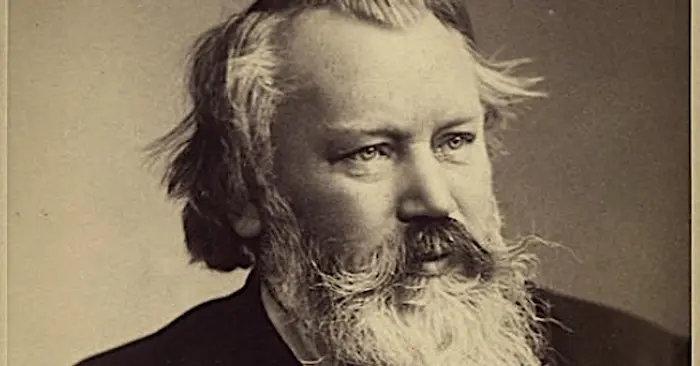Johannes Brahms’ Symphony No. 3, composed in 1883, is one of the defining works of his symphonic output and a pinnacle of Romantic orchestral music. Created during a period of personal and professional stability, this symphony reflects Brahms’ mature compositional style. The work stands out for its intricate orchestration, emotional depth, and thematic cohesion. Symphony No. 3 is celebrated for its use of the F-A-F motif, which Brahms used as a personal emblem. The symphony’s four movements range from the vigorous and energetic to the lyrical and introspective, showcasing Brahms’ ability to blend complexity with accessibility. This exploration of Symphony No. 3 delves into its structure, thematic content, and the emotional impact of each movement.
I. The Historical Context of Symphony No. 3
Brahms composed Symphony No. 3 during a period of personal and professional contentment. By this time, he had already established himself as a leading composer. His First and Second Symphonies had been well received. Symphony No. 3 came at a time when Brahms was at the height of his creative powers. It premiered on December 2, 1883, by the Vienna Philharmonic Orchestra, conducted by Hans Richter. The symphony was met with immediate acclaim, solidifying Brahms’ reputation as a master symphonist.
II. Structure and Movements
Symphony No. 3 is structured in four movements:
Allegro con brio
Andante
Poco allegretto
Allegro
Each movement contributes to the overall character of the symphony. The work is notable for its use of the F-A-F (Frei aber froh) motif, meaning “Free but happy,” which Brahms used as a personal motto.
1. First Movement: Allegro con brio
Themes and Motifs
The first movement opens with a powerful and energetic theme. This theme is based on the F-A-F motif. It is immediately engaging and sets the tone for the entire symphony. The movement is in sonata form, with a clear exposition, development, and recapitulation.
Orchestration and Texture
Brahms uses the full range of the orchestra in this movement. The strings, woodwinds, brass, and percussion all have significant roles. The interplay between different sections of the orchestra creates a rich and complex texture.
Emotional Impact
The Allegro con brio is both vigorous and lyrical. It contrasts moments of intensity with passages of serene beauty. This dynamic range contributes to the movement’s emotional depth.
2. Second Movement: Andante
Themes and Motifs
The Andante is more relaxed and contemplative. It features a gentle and lyrical main theme. This theme is presented by the woodwinds and then taken up by the strings.
Orchestration and Texture
The orchestration in this movement is more restrained. Brahms focuses on creating a warm and intimate sound. The use of solo instruments adds to the movement’s character.
Emotional Impact
The Andante provides a contrast to the first movement’s intensity. It is calm and introspective, allowing the listener to reflect and relax.
3. Third Movement: Poco allegretto
Themes and Motifs
The Poco allegretto is one of the most famous movements in Brahms’ symphonies. It features a simple, yet beautiful melody. This theme is first introduced by the cellos and then passed to other sections of the orchestra.
Orchestration and Texture
Brahms’ use of orchestration in this movement is masterful. The interplay between different sections of the orchestra creates a delicate and intricate texture.
Emotional Impact
The Poco allegretto is both graceful and melancholic. It has a lyrical quality that is deeply moving. This movement is often performed on its own due to its popularity.
4. Fourth Movement: Allegro
Themes and Motifs
The final movement returns to the energetic and powerful character of the first movement. It features a vigorous main theme that drives the movement forward. This theme is developed and transformed throughout the movement.
Orchestration and Texture
The orchestration in the Allegro is bold and dynamic. Brahms uses the full orchestra to create a sense of excitement and momentum. The movement builds to a dramatic and triumphant conclusion.
Emotional Impact
The Allegro is exhilarating and triumphant. It brings the symphony to a powerful and satisfying conclusion.
III. Significance and Legacy
Brahms’ Symphony No. 3 is significant for several reasons:
1. Mature Style
It represents Brahms’ mature style, characterized by technical mastery and emotional depth. The symphony is a testament to his skill as a composer.
2. F-A-F Motif
The use of the F-A-F motif is a personal touch that adds an extra layer of meaning to the work. It reflects Brahms’ personal philosophy of being “Free but happy.”
3. Reception and Influence
The symphony was well-received at its premiere and has remained popular ever since. It has influenced many composers and remains a staple of the orchestral repertoire.
See Also: Classical Music for Kids: A Deep Dive into Timeless Melodies
IV. Conclusion
Brahms’ Symphony No. 3 remains a quintessential example of his orchestral mastery and emotional expressiveness. Its four movements offer a compelling journey through varying moods and textures, from the dynamic Allegro con brio to the reflective Andante and the evocative Poco allegretto, culminating in the triumphant Allegro. The symphony not only highlights Brahms’ mature style but also his skill in using thematic motifs, such as the F-A-F, to add personal and philosophical layers to his music. The work’s continued popularity and influence underscore its significance in the classical repertoire. Symphony No. 3 endures as a testament to Brahms’ artistry and his ability to craft music that resonates deeply with audiences across generations.

